For the past 5 years, email marketing has been more popular as a way to promote products and interact with customers by sending the latest information via email. This is a very important aspect of blogging and online marketing. Here I suggest the Mailchimp service to start your online email marketing and start list building. This list helps you interact with your customers or readers online.
Mailchimp is a popular email marketing service that allows you to create and send newsletters, email campaigns, and other types of email content to your subscribers. In this article, we’ll show you how to use Mailchimp to create and send email campaigns.
We’ll also discuss some of the features of Mailchimp and give you tips on how to improve your campaigns. So read on to learn how to use Mailchimp to build successful email campaigns.
Are you planning to start email marketing to get in touch with your blog readers and to promote your products? This article is for you. In this article, we are discussing the topic of “How to Use MailChimp with WordPress within 30 Minutes.”
Table of Contents
What is Email List Building?
The term “list building” means the creation of a list of email addresses (or other contact details) that can then be used as part of an online marketing campaign. List building can generate long-term online income or business for you. Email list building is very important before you start email marketing.
What is the difference between a mailing address and an email address?
“Email address” is a commonly understood term with one main modern meaning. It is the address that people can use to reach you with SMTP (Simple Mail Transfer Protocol) email. “Email ID” is not a term that has a common or generally understood meaning.
The Importance of List Building:
- The email drives more conversions (more subscribers into customers).
- The list building helps you reach the target people easily
- You can create a community with like-minded people to maintain personal interaction and act as your regular visitors to market your products.
Why MailChimp?
MailChimp is one of the good online marketing platforms for small businesses. It was founded in 2001 by Ben Chestnut and Dan Kurzius.
It works as a marketing automation platform and an email marketing service.
Most of the new bloggers’ first choice is to use a tool that helps collect emails from their websites or blogs. Simply, it is a beginner-friendly email marketing service. You can visit MailChimp’s website officially.
This is the most affordable email marketing platform for beginners because it provides a free option to start the first list.
We can send fewer than 12,000 emails per month or have fewer than 2000 subscribers. It means you can start right now without paying a single penny.
When your list grows to more than 2000 subscribers, you will be asked to upgrade your account to a premium plan at a very low price.
Since then, Mailchimp has become one of the most popular and well-known email marketing platforms on the market. Recent updates are turning it into a full-fledged marketing platform.
Features:
- User-friendly interface setup auto-responding feature. performance tracking feature with comprehensive analytics feature
- You can send 12000 beautiful emails per month. You can start list building with up to 2000 subscribers in their free version.
- You can send blog updates by using the RSS email newsletter feature. You can connect your eCommerce store.
How to Use Mailchimp to Start List Building?
How to use MailChimp step by step? Are you excited to start list building? How do I use MailChimp to send emails?
This article is for you. Follow the below steps and start the listed building from your side.
Get started with Mailchimp Sign up to create your first email list. Create Sign up FormAdd Mailchimp signup form with WordPress
1. Getting Started with Signup
To connect the MailChimp service with your WordPress blog, you need to register your details and create an account with MailChimp.
- Visit the MailChimp site and click on the “Sign up Free” button

- Fill out the form with your email address, the username (create a new one now), and password. Follow the instructions given below the form to create a new password.
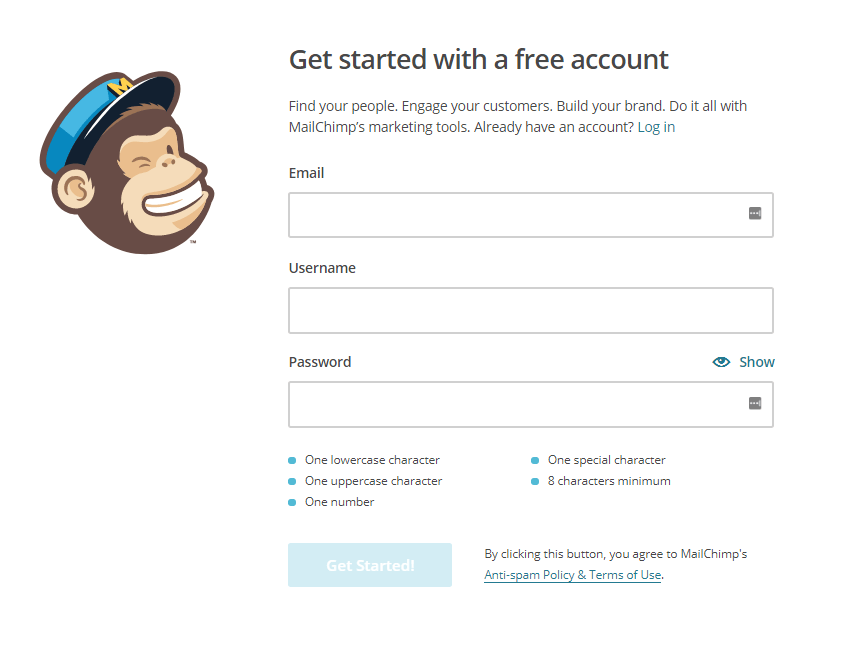
- After that, finish your form and then click on the “Get Started” button. Now you will be redirected to the Mailchimp Dashboard.
2. Create your first Email List
- After creating your new account, first, you need to create a new list. To do this, click on the “Create A List” button from the Dashboard.

- Now enter the Email list name, and email address to which users can reply, (a reminder for people how they got on your list, etc.)
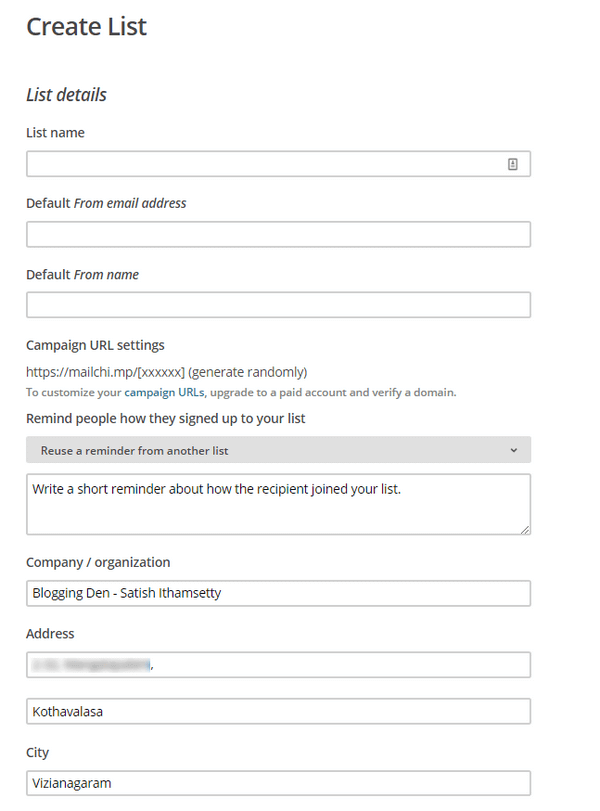
- Fill out the form and click on the “SAVE” button.
Yes, now you have successfully created the new email list folder in your new account. Next, you need to connect your email list folder with a WordPress blog.
3. Create a Signup Form
MailChimp has an additional built-in feature to create a basic subscription form. To use this feature, sign up for your list.
- Click on the downward arrow button from the newly created email list page. It is located at the side of the Stats button and chooses Signup forms.

- On the next screen, you will get different types of form types. Click on the Select button from the embedded forms.
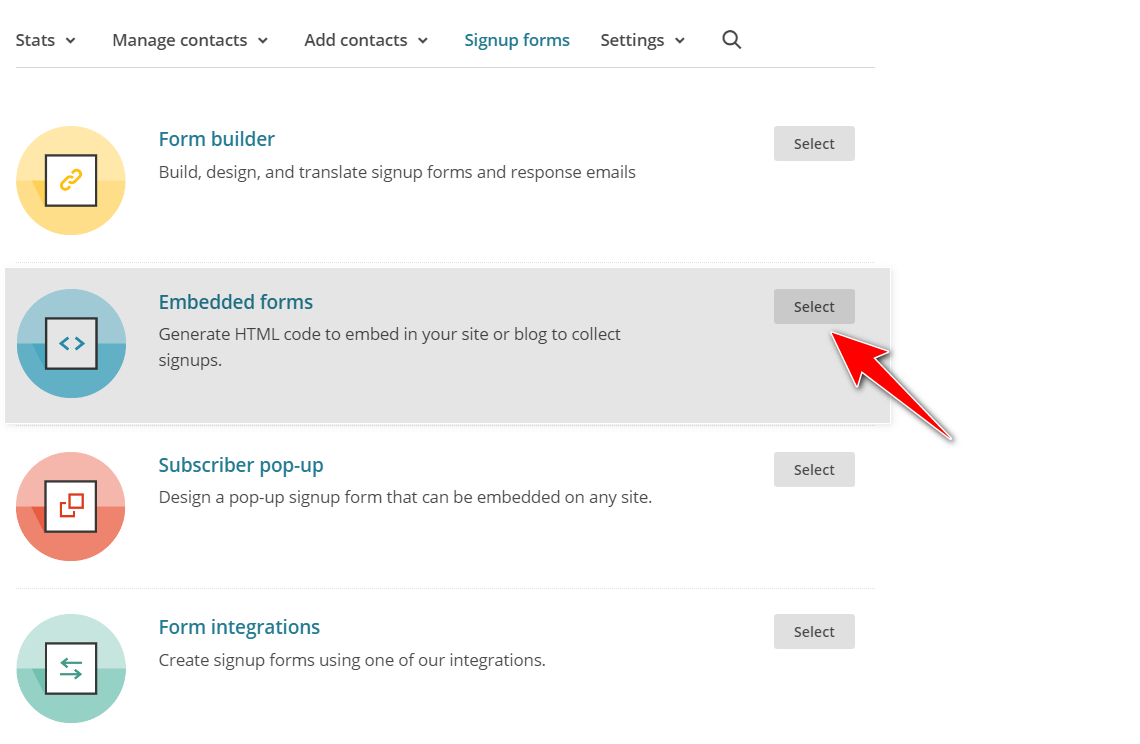
- Now you will be on the Settings page. You can choose what fields you want to show in your form and adjust the form dimensions as per your needs.

- After that finish, your settings, just copy the code and paste it into notepad for the next step.
4. Add MailChimp signup form with WordPress
There are two methods that work to display the signup forms on a WordPress blog.
- Placing MailChimp code directly using MailChimp WordPress plugins
- Place Mailchimp code:
- To place the code, you need to log in to your WordPress blog dashboard.
- Then click on Appearance > Widgets.
- Add a custom HTML or text widget to the WordPress sidebar.
- Paste the HTML code (copied from the MailChimp signup form settings page).
- Finally, click on the SAVE button to save the code. That’s it. Check out the preview from the home page.
- Using MailChimp and WordPress Plugins:
- There are a few MailChimp WordPress plugins available to place beautiful and colorful subscription forms.
- They help you connect to your email list folder. Recently, I wrote an article on Free MailChimp WordPress Plugins.
- A few of the plugins are given below in the next section. The list is helpful for picking a suitable plugin for the WordPress blog.
- Install the plugin from the plugin dashboard and enter the Mailchimp API key / connect your MailChimp account and set the email list root from the plugin.
- That’s it.
How to Create a WordPress RSS Feed Newsletter in MailChimp?
RSS means Rich Site Syntex (or) Rich Site Summary. It is a very good feature to send a recent blog post update to your visitors in the form of a newsletter or email letter. It is called the RSS newsletter.
A few years back, I used the Feedburner service from Google to send my new blog post updates to my RSS subscribers. Three years ago, I stopped using the Feedburner service and migrated to Feedburner alternatives like the RSS Feed newsletter in Mailchimp.
It is very easy to set up. To set up an RSS for an email campaign, log in to your MailChimp account and click on Mailchimp Campaigns >Create Campaign.

- The same screen, shows different types of campaigns pop up, like email, ads, landing pages, postcards, and signup forms. Here, choose email.

- In the Email section, choose Automated > Share blog updates

- You will get Share blog updates on the screen. Enter the Campaign name and choose the list from the drop-down.
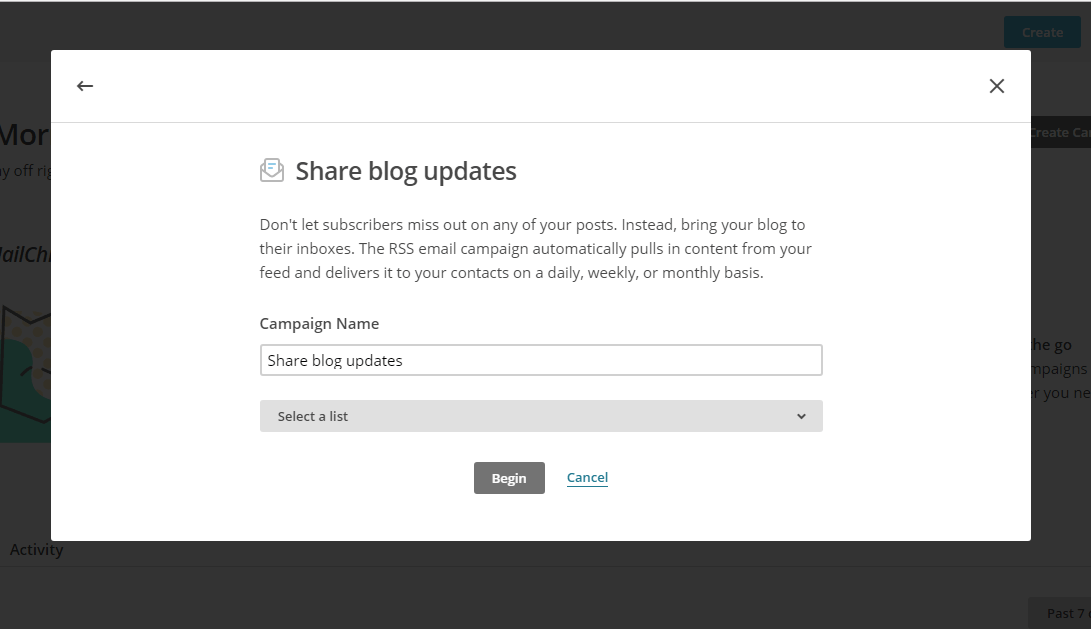
- Enter the blog RSS feed URL in the box. It is simple. Add “/feed” after your domain name.
E.g.: https://bloggingden.com/feed
- Now choose the timing for your email from the screen.
- After picking your settings, click the Next button and choose the list.

- On the screen, enter the Campaign info details like the Name of your campaign, Email subject, name, and From Email address.
- After filling in the details and making sure the subject line should be attractive then click on the Next button.

- Now you will need to choose the template for your email.
- MailChimp is providing more templates as per our needs.
- Select one template as per your requirement.
- A blank page is my personal recommendation.
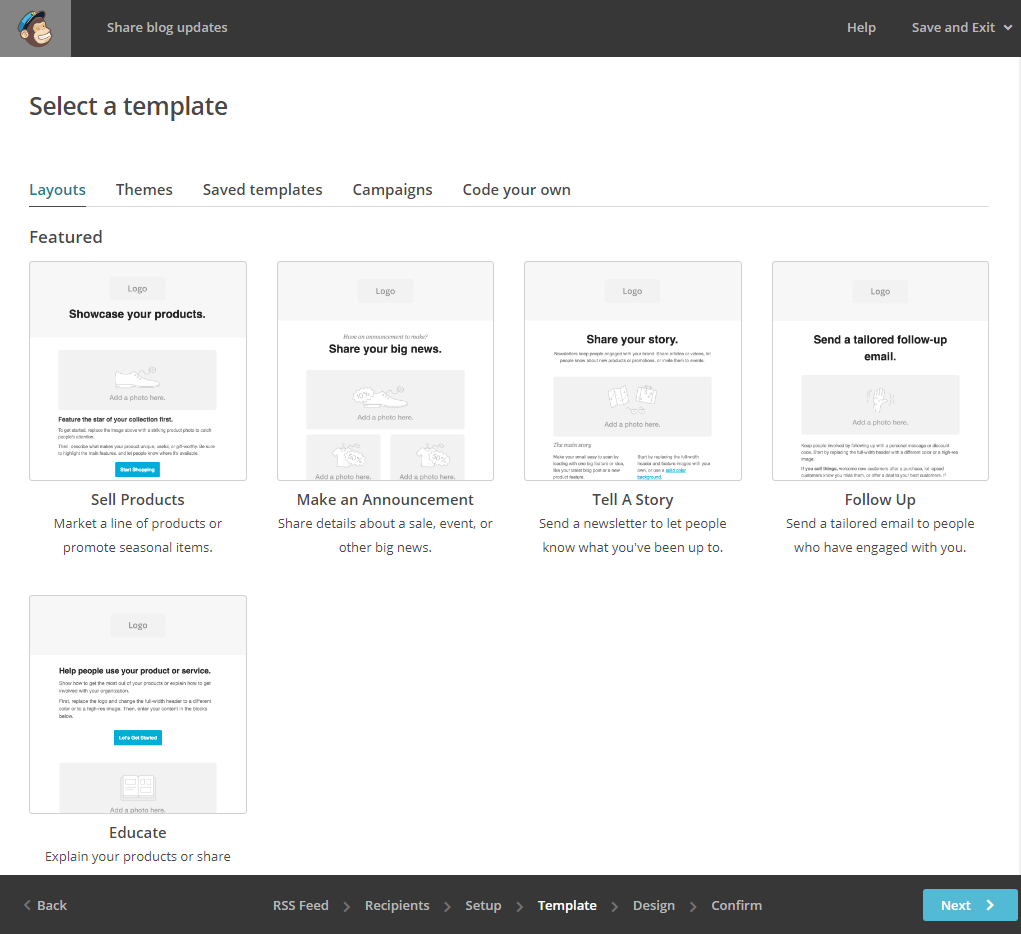
- This is the last page to complete your setup. In MailChimp, it allows you to design the Email format by dragging and dropping the elements from Content and Design elements from the right box.
- Add RSS Header and RSS items box to your email template.
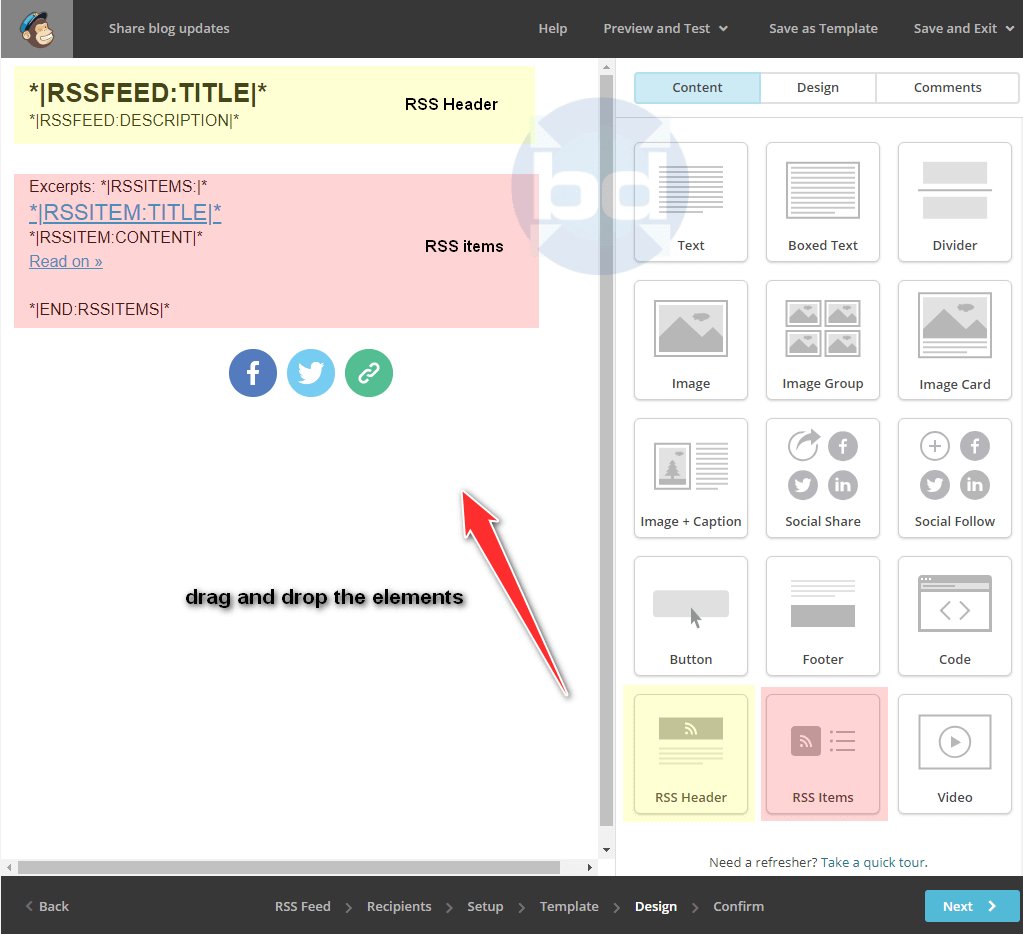
- Check and choose the list of subscribers and Finally, after adding informative elements to the email, click on the Next button when you are done. Lastly, click on Start RSS.

- Now your MailChimp account is ready to send your blog updates to your subscribers when your blog update with a new post.
What are the best places to add the Subscription form in WordPress?
Placing of Subscription form in the blog is very important. I tested a few places on my blog. Here are a few…
- Top Right side column: The most effective place for easy subscription
- Below the menu bar: It gives a professional look to your blog. This place is giving very high conversion rates. I suggest placing this on the homepage, not in posts and pages.
- After the blog post: After reading your post completely, the reader becomes a loyal visitor to this place. The best spot to place the subscription form.
- On the About Page: This is a compulsory place to place the signup form within the content/end of the content.
- In Fly-in widget: These are simple optin forms and are easy to integrate within the posts.
- Popup widget: After a few seconds of the blog loading, the popup optin forms will be displayed. This is a common widget for every blog. An effective place to get more email subscriptions.
- Full-Screen Popup: This feature is available in a few premium plugins like Convertplug and Optinmonster, etc.
- Welcome Gate: It is similar to a pop-up. It consists of a simple headline and a call to action button.
Learn How to Use Merge Tags
An easy-to-use tool with a fairly intuitive user interface is Mailchimp. You will become more accustomed to it as you use it more frequently.
There is one essential concept, however, that you must understand from the start because it’s crucial: merge tags.
When crafting your emails, you can use merge tags to add dynamic tokens that will make them appear and sound more personal. These tokens (audience merge tags and system merge tags) draw information from your audience and account.
I’ll use a few brief instances to illustrate:
*|FNAME|* is a merge tag that stands for your recipient’s first name. So, given that you’re collecting your subscribers’ names, if you start your emails with “Hey *|FNAME|*“, all of them will receive a nice email with their name on it. That’s a nice touch, isn’t it?
Another example:
Let’s say you want to send someone an email confirmation, but first, you want to make sure the email address you have on file for them is accurate (by the way, use these guidelines to locate anyone’s email address). To pull your recipient’s email address into your own message in this situation, use the symbol *|EMAIL|*. It should resemble something like this:
You have access to a wide variety of merge tags, many of which will perform to the best of their abilities when it comes to creating automation sequences and audience segmentation.
How can I improve my email marketing strategy?
There are many ways to improve your email marketing strategy, but the most important thing is to test and measure your results.
- Plan Your Message: Write clear, concise emails that address your subscribers’ needs. Tailor the message to each individual subscriber by including their name and interests.
- Send Regular Emails: Keep sending relevant, high-quality emails to keep your subscribers engaged. Sending fewer than three emails a week can result in a lower open rate and reduced click-through rates (CTRs).
- Use Social Media Platforms: Share engaging content.
- Use Mailchimp’s Custom Labels: Put target labels on your email content to help subscribers find the information they’re looking for.
- Send Emails at Appropriate Times: Time of day can affect open rates and CTRs, so send emails when your recipients are likely to be online or when they’re most likely to act on them.
- Use Images, Videos, and Headlines: Incorporate images, videos, and headlines to make your email more engaging.
- Keep Subject Lines Short and Concise: Try to keep the subject lines under 30 characters so that they’ll fit on a phone screen or in a notification box.
- Use Popups and Social Media Buttons: When you have an opportunity to do so, use popups or social media buttons in your email content to increase engagement.
- Use Custom Labels: If you have product data that needs to be organized in a specific way, consider using custom labels in your email templates.
Best Mailchimp Alternatives
Mailchimp is one of the most widely used email marketing platforms. If you want to try something else, here are some alternatives to consider.
Email marketing has become a powerful tool for businesses to connect with their customers. The good thing about email marketing is that it’s cheap, effective, and versatile. In addition, it provides real-time feedback that helps companies improve their campaigns.
But did you know they also offer a variety of other services, such as webinars, surveys, landing pages, and even CRM software?
If you’re looking for alternatives to Mailchimp, then look no further! There are plenty of tools that can help you create effective emails, build landing pages, manage leads, and much more. Here’s a list to get you started.
a. ConvertKit
ConvertKit is an email and automation tool that helps creatives build profitable online businesses. The product was created by Bryan Harris, who wanted to create software that helped him run his own successful creative business, but it didn’t exist yet.
Convertkit is an easy-to-use landing page builder, sales & marketing automation tool, and live chat for small business owners who want to build their own online products.
ConvertKit is like having your own virtual personal assistant as they take care of every aspect of growing your business, including email marketing, customer support, A/B testing, social media management, and much more!
ConvertKit has helped people make over 100,000 products and grow them into companies worth millions of dollars.
Features of Convertkit
- Fully integrated email marketing
- Custom forms for collecting leads and building your list
- Automation makes it easy to send welcome emails, set up drip campaigns, and more
- Unlimited users, unlimited subscribers
- Free trial period
- Stripe integration for accepting payments
- Built-in analytics
- REST API
- Mobile apps available for iOS and Android
b. Constant Contact
Constant Contact makes it easy to create and send beautifully crafted emails that get results. With our award-winning drag-and-drop editor and intuitive automation tools, you can quickly design your messages and send them out in just minutes.
It lets you target specific groups of contacts based on their interests or demographic information with its powerful segmentation tools. And if you want to go beyond basic email marketing into more dynamic programs like landing pages or surveys, we have everything you need.
Start building beautiful, targeted messages today—all without having to pay an IT expert for support. We’ll be there when you need us.
Product Features:
- Simple drag-and-drop interface
- Prebuilt templates
- Powerful automation tools
- Segmentation management
- Landing page builders
- Survey creators
c. Aweber
Aweber is an easy-to-use email marketing software platform that makes it easier than ever to build and send beautiful emails.
It’s the perfect tool if you want to automate everything about your email marketing campaigns, from sending messages to making reports, collecting data, launching ads, and more.
As part of our ongoing effort to give the best service possible, we keep adding new features and functions to Aweber. We’re always interested in what you and our other customers have to say, and we use that information to plan new versions of our products.
Aweber helps thousands of small businesses every day across many different industries, and we believe it can be a game-changer for your business too!
Features of Aweber:
- Get started quickly & easily
- Send unlimited emails, fast
- Build automated sequences and create custom HTML
- The track opens, clicks, bounces, unsubscribes, etc
- Schedule automatic follow-up emails
- Integrate with nearly any payment processor or CRM
- Receive real-time stats and insights
- Manage multiple lists and subscriptions simultaneously
- Easily manage social media links
d. MailerLite
MailerLite has been creating quality emails since 1998. We have helped over 1 million small businesses grow their eCommerce revenue, increase their conversions, and reduce their costs. Our team of marketers, designers, developers, support staff, and consultants are here to serve your needs.
MailerLite is an affordable tool for small businesses. You can set up your own autoresponder or email newsletter using MailerLite’s simple wizard interface. No technical skills are required! Simply choose the template you want to use, fill in the text, add your logo, and send it out to thousands of people!
Product Features:
- Ease of Use: Our simple interface lets anyone set up an email campaign without having to be tech-savvy.
- Flexible Workflows: Create a workflow based on any number of factors such as customer name or product purchased.
- Customizable Templates: Automatically generate personalized emails using customizable templates.
- Powerful Cloud Hosted Solution: Save time and money because we’re fully automated, mobile responsive, and can scale automatically as your business grows.
e. SendinBlue
Sendinblue is an email marketing tool like no other. With a simple drag & drop editor, you can send personalized emails to your clients or customers without coding knowledge. Get more leads and sales, and grow your business today!
Sendinblue is a highly intuitive CRM solution that helps small business owners build powerful customer relationships and grow their businesses through effective communication. With Sendinblue, you can quickly build customer profiles, automate follow-up emails, track leads, set up automated campaigns, and integrate with your favorite apps like Slack, Trello, and Google Analytics.
Product Features:
- Simple Drag & Drop Editor: Create beautiful HTML5 templates and send them instantly with just a few clicks.
- Automated Emails: No coding skills are required. Use our easy-to-use automation tools to automatically create automated emails for your campaigns.
- Segmentation: Identify segments based on any criteria such as customer location, gender, age, interests, etc.
- Multiple Campaigns: Set up multiple campaigns and track results across channels.
- Responsive Design: Our template designs are responsive, so they will always display on all devices. The best part? You can edit your design right inside our editor.
- Free Support: We’re here to answer your questions every step of the way.
- Unlimited Plans: Start for free and upgrade if needed.
- Data Visualization: Easily see what works and doesn’t work when it comes to email engagement.
- Unrivaled Conversion Rates: See how many of your subscribers actually open your messages.
- Custom Domain: Add your own domain name and customize your URL to make it more unique.
- Inbuilt Analytics: Track your success through various metrics, including opens, click-through rates, bounces, unsubscribes, and much more.
Frequently Asked Questions (FAQs)
What is MailChimp?
MailChimp is a marketing automation platform that helps business owners send automated emails, create custom email campaigns, and track their MRR. Mailchimp offers three ways to use its service: as a builder, an integrator, or a subscriber. As a subscriber, you can use Mailchimp’s tools to manage your email campaigns and track your MRR (across all of your connected accounts). If you’re the type of person who likes to build things themselves or if you want to integrate MailChimp with another system like WordPress or Shopify, then using Mailchimp as a builder is probably the best route for you.
How do I use basic Mailchimp?
To use Mailchimp, first, choose a plan that best suits your needs. You can then create and manage your lists using the tools provided. To send email campaigns, simply fill out the necessary fields and click “Create Campaign.“
Is Mailchimp easy to learn?
Yes, Mailchimp is easy to learn. You can start using it immediately by signing up for a free account. Once you have an account, you can create and manage your mailing lists in minutes.
Can one use MailChimp without a website?
Yes, you can use MailChimp without a website. You’ll just need to create an account and enter your email address.
Is MailChimp the best email marketing service?
There is no single “best” email marketing service. Factors that determine which service is best for a particular organization include size, frequency of email sending, and budget. Many popular services, such as MailChimp and Constant Contact, offer free plans with limited features that can be upgraded later on. It’s important to compare each service’s features and pricing before making a decision.
Which one is better for e-mail marketing: MailChimp or Aweber?
Both Mailchimp and Aweber offer a number of great features that can make e-mail marketing more effective. However, if you are looking for an all-inclusive platform that offers a wide range of capabilities, then MailChimp may be the best option for you. It is one of the most popular email marketing platforms out there and has extensive functionality that allows you to plan and execute your campaigns quickly and easily. Aweber also offers many great options, but it may not have as much flexibility when it comes to planning your campaigns or managing subscribers’ data. Additionally, its design could be less user-friendly for those who are new to email marketing. If these matters do not matter to you, then Aweber may be a good choice for you!
Final Words
MailChimp is an email marketing service. You send emails to your customers, and you pay MailChimp each month to send out those emails. There are many features you can use in order to make your emails better. For example, you can change colors, add images, and change fonts. You can also set up autoresponders so that every time someone subscribes to your list, an email goes out automatically.
You can also buy lists of people who want to receive emails from you. You can collect addresses from your Twitter followers or Facebook fans. Then you can put people on your mailing lists and send them messages. Or you can invite people to sign up on your site. You can also do surveys online to gather information about your audience. Once you have collected the data, you can use it to send targeted emails to your new customers.
- Best Social Bookmarking Sites
- How to Submit Your WordPress XML Sitemap to all Search Engines?
- Rank Math SEO plugin: The SEO Trend Changer for WordPress Users
If you decide to start an email campaign, you should always consider how many recipients you expect to reach. You should also think about whether you want to send multiple messages at once. Sometimes, sending 10 separate messages to 10 different people at once is too much for any recipient. You might want to select a few dozen people and send them one message each.
- How to Add FAQ Schema in WordPress? (Step by Step Guide)
- How to Build Your WordPress Website Quickly with Elementor Plugin?
- What is Cloudflare? How to Connect Free CloudFlare CDN to your WordPress Blog?
This guide helps you with how to use the MailChimp tutorial for beginners and how to configure a new MailChimp account for WordPress blogs or email marketing.

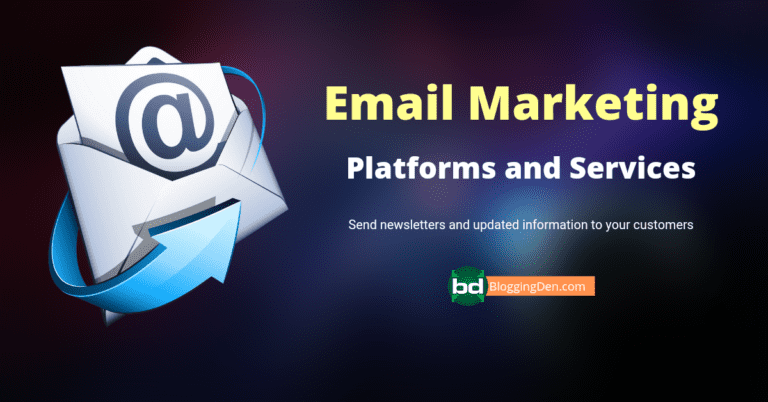
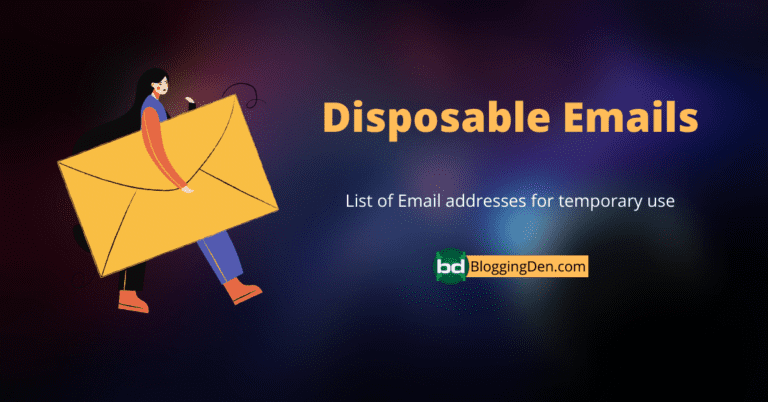
These Steps Are Really helpful For Email Marketing to use Mailchimp with WordPress to Send anyone Emails, and increase business. thanks for sharing with us.
Excellent resource. I’ve been contemplating alot about the right email tools, I think I found the one now. I will definitely add this to my bookmark
Hey Mate,
I am Vikas Gupta from India
You had written an excellent article, you are doing work, keep it work.
looking for more articles like this.
Thanks
very informative article. so helpful. such a wonderful blog. thanks for sharing this post. keep sharing.
First of all, I would like to thank you for sharing such a nice help on the basic problems that we come across often. It’s too good information.